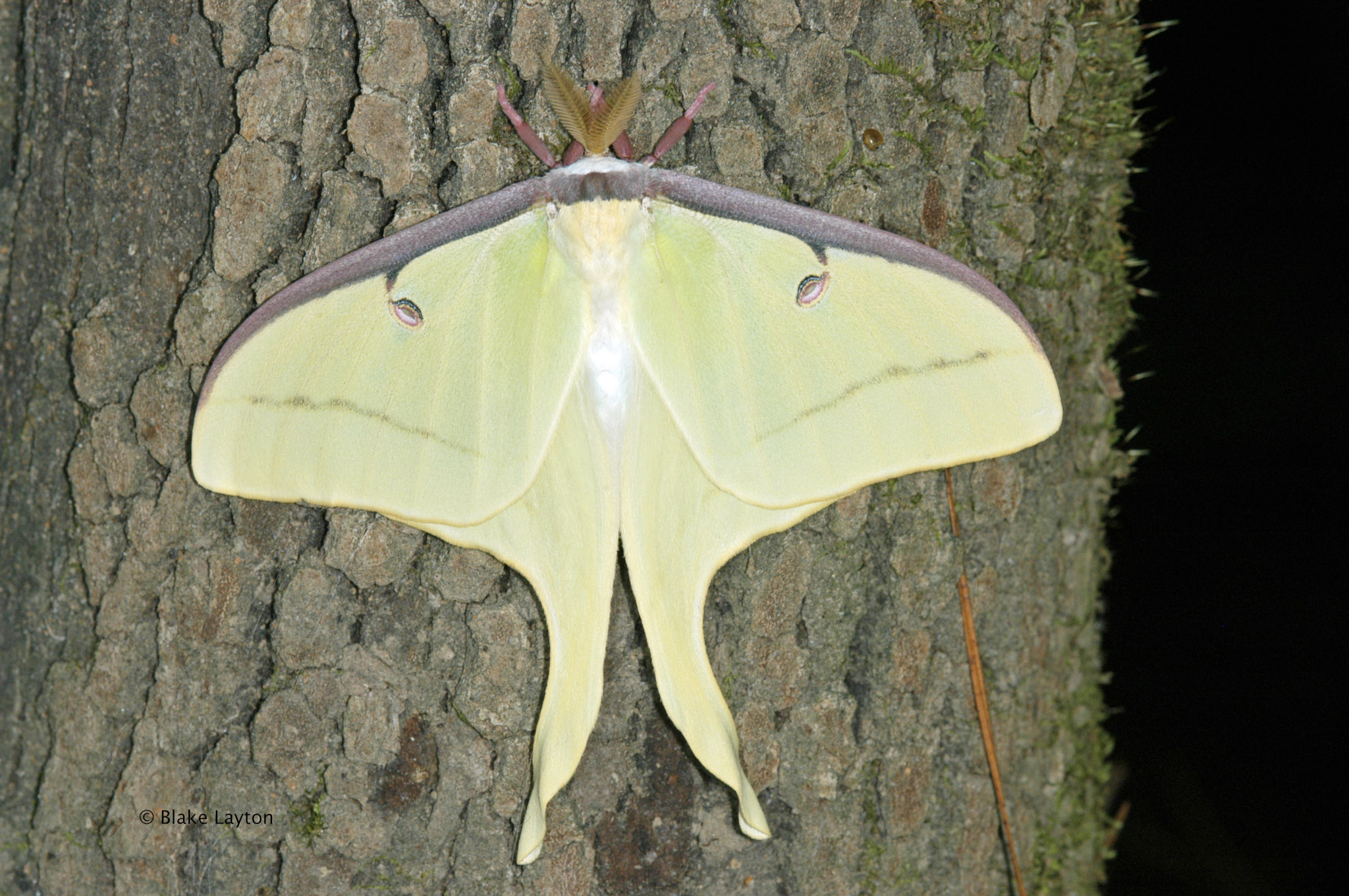Luna Moth, Vol. 10, No. 12
Related News
June 4, 2015
May 19, 2015
May 15, 2015
 Luna moths are easily recognized by their large size, pastel green color, and those long tails on their hindwings. With wingspans ranging from 3.5 to 7 inches, they are one of our largest moths. They belong to a group of moths known as giant silkworm moths, which includes Polyphemus moths, regal moths, imperial moths, and more.
Luna moths are easily recognized by their large size, pastel green color, and those long tails on their hindwings. With wingspans ranging from 3.5 to 7 inches, they are one of our largest moths. They belong to a group of moths known as giant silkworm moths, which includes Polyphemus moths, regal moths, imperial moths, and more.
Most moths are drab-colored because they are active at night when color is not that important. The light green wings of luna moths cause them to be a bit more noticeable in flight and they are often spotted flying around lights at outdoor sporting events. Sometimes they are found resting on the side of a building after being attracted by lights and becoming “stranded” by morning. Normally, they spend the day resting in trees, where their green wings provide camouflage. If they are discovered by a potential predator, the eyespots, which can be suddenly revealed by moving the front wings forward, can startle and intimidate.
Luna moths are sometimes confused with swallowtail butterflies because of their long tails, but luna moth tails are a bit more complex. They are twisted and slightly cupped and play an important role in helping increase the moth’s chances of survival—by confusing hunting bats and focusing their attacks on the less critical area. Bats hunt using echolocation, not sight, and those twisted tails reflect the sound pulses of bats better than the bodies of the moths.
In one study researchers removed the tails from some moths while leaving others intact and tethered flying moths in front of a camera where they were exposed to big brown bats. The bats caught 81% of moths with tails removed but only 34.5% of moths with tails. You may have even seen evidence of this yourself, if you have ever found a luna moth with tattered hind wings, missing one or both tails.
Some butterflies use a similar strategy to trick birds. Gray hairstreak butterflies, which carry their wings vertically above their body when at rest, have long, narrow tails on their hind wings that resemble antennae, along with eyespots and splashes of color. By constantly wiggling their wings when at rest they call attention to this false head, causing birds to attack the wrong end of the butterfly. It is common to encounter hairstreaks with beak-shaped bites missing from their hind wings.
Some species of moths avoid bats in a more active manner. This includes economically important pest species such as armyworms and corn earworms. They have “ears” or tympanic membranes that allow them to hear the echolocation calls of bats and adjust their flight to try to avoid them. When they hear a bat that is far away, they simply fly in another direction, but when a bat is close and homing in, they take evasive flight maneuvers. These maneuvers vary with species; some zig; some zag; some simply fold their wings and drop. It does not always work, but it does increase their odds of survival. Some scientists are even exploring the potential to use this behavior as a method of pest control—by playing artificial bat calls around a crop field to frighten away egg-laying moths.
Blake Layton, Extension Entomology Specialist, Mississippi State University Extension Service.
The information given here is for educational purposes only. Always read and follow current label directions. Specific commercial products are mentioned as examples only and reference to specific products or trade names is made with the understanding that no discrimination is intended to other products that may also be suitable and appropriately labeled.
Bug’s Eye View is now on Facebook. Join the Bug's Eye View Facebook group here.